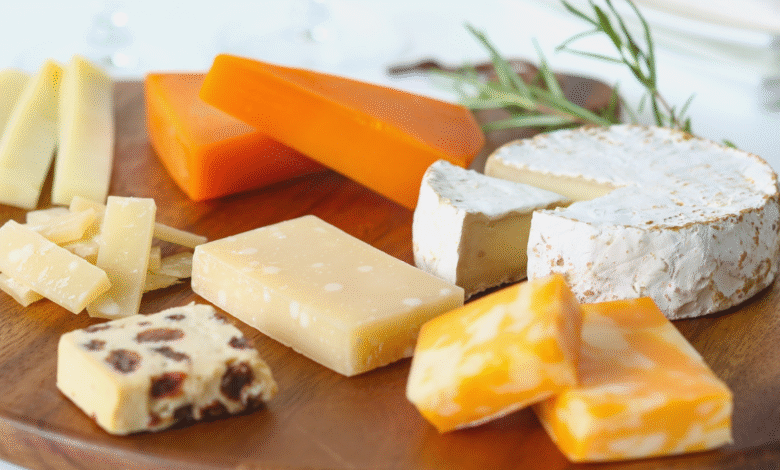Grouse Cheese: Good Taste and Tradition on the Click of a Mouse

Grouse cheese is an amazing cheese for the ones who are lucky to taste and have the opportunity – with very deep roots on its highland area, the place where they prepare it with love and dedication. From the flavor to the history, semi-hard cheese is not just a tasty side dish, it’s the representation of an excellent tradition of artisan cheese making.
What is Grouse Cheese?
Grouse cheese is an unpasteurized washed-rind cheese, a cheese type that is traditionally and regionally produced in areas with a highland, rocky outcrop natural wildflower meadow physical footprint. Named after the grouse bird which inhabits the same rugged landscapes, it’s the emblem of these harsh but stunning terrains. This is a cheese that transcends flavor: It’s about the story behind it — something that originated out of necessity, then became a point of pride for generations of cheesemakers.
A Little Background on Grouse Cheese
The creation of Grouse cheese was simply a way for villagers living in isolated cold areas, where there was a lack of refrigeration, to preserve milk. This cheese comes from these highland villages who made this cheese to last long winters and offer them food for tough climates. The original cheese makers managed to combine what they knew of wild herbs, alternate sources of natural rennet and cave aging methods, so as to make a cheese that not only wouldn’t spoil, but in fact would improve in its aging process.
Over the centuries, the grouse cheese recipe developed, and it came to be kept within families, within communities. What we have today is a cheese that mirrors the tradition of ages gone by.
The Making Of Grouse Cheese
Production of grouse cheese is a complex process and begins with sheep, or goat or combined milk. These animals browse on wild grasses, herbs and flowers, giving the milk its distinct flavors.
Milk Collection and Coagulation
Milk used to make grouse cheese is usually raw, to preserve the taste of the pasture it came from. Unto this is added rennet that is made from wild rennet, which is sometimes produced from nettles or cardoon thistles to curd the milk. This natural rennet provides the cheese with its characteristic flavor and adds to its earthy tone.
Curdling and Pressing
The milk curdles, and the curds are gently cut and put in molds. And unlike today’s mechanized processes, the pressing is meticulous, often with old-school weights (like rocks). The cheese molds are then enclosed in muslin cloths and left to drain, through which they soak and become firmer.
Salting and Aging
After that, the cheese is salted — by brining, or rubbing salt directly on it. That’s followed by aging, when the cheeses dry from the outside in. Not only will this improve the taste, but it serves as a preservative as well. Then it is aged in natural environments — perhaps cool caves or wooden shelves — from three months to even 18 months. The cheese develops its characteristic texture and flavor during this time.
Taste of Grouse Cheese
Grouse cheese tastes as rich and intricate as its history. In its youth, it can have a smooth, pliant texture with flavors approaching mellow and buttery. It grows denser with age, and so does its flavor. The aged version is crumbly, with a deep earthy flavor that sings of the wild herbs and alpine plants and even a hint of smoke on which it’s aged.
Some common tasting notes include:
- Earthy and Herbal: The animals natural diet of free range grazing, endorses a wildflower flavour.
- Nutty and Resinous: It has been aged with deep nutty flavors that makes it rich and savory.
- Mossy and Peaty: A woodsy hint and mossy inflection contribute complexity to the cheese.
Culinary Uses of Grouse Cheese
Cheese grousing is a veritable joy in the kitchen. Whether eating it straight up or cooking with it, it imparts depth and richness to any meal.
Cheese Boards
Grouse cheese goes great with other cheeses, charcuterie salumi, figs, or nuts. Its firm texture has a great sliceable consistency and its sharp, aggressive flavors pair well against the sweetness you get from figs and pears. A little bit of honey and some crackers (not for collapsing distribution) makes for a simple, satisfying cheese board.
Melted Dishes
It also melts great, so is perfect for the grilled cheese or in your gourmet burger. It is also great for creamy pastas, melted into sauces for a rich texture.
Salads
Grouse cheese shaved over a fresh salad can make the dish. Toss it with some mixed greens, roasted walnuts, and a little balsamic vinaigrette for a light but yummy meal.
Baked Goods
For a sweet twist on PowerPoint-specied t this and torte, youcan work your grounds them intoiped pound cake or go savory and serve hese with scones or muffins.Any good drugstore will turn up a decent tin gift to yourselvesoud paste. It will make a lovely counterpoint to the background notes of herbs and spices.
Grouse Cheese, Paired With Wine and More
The strong flavors of grouse cheese demand similarly strong partners. Here are the best combinations:
- Red Wines: Pair with a robust red such as Cabernet Sauvignon or Syrah. The hearty wine will not get lost alongside the salty cheese.
- Craft Beer: The beer’s nuttiness and earthiness tug at a Belgian ale or a kind of muscular IPA, an insistent heft from the glass.
- Nuts and Fruit: Walnuts and apples or pears provide a great contrast to the saltiness and creaminess of the cheese.
The Healthy Aspect of Grouse Cheese
Grouse cheese is not only tasty, it is also very healthy to eat. Here are some of the health benefits:
- High Protein: Cheese is naturally high in quality protein – much of which plays an essential role in muscle repair and overall health.
- Calcium: Nutrient Boost: As with most cheeses grouse cheese is a rich source of calcium, which helps keep bones and teeth strong.
- Probiotics: Because it is a raw milk cheese, it contains healthy bacteria that promote good stomach health.
- Good Fats: The cheese has good fats which are essential to boost nutrient absorption and energy for the body.
Where to Find Grouse Cheese
It may take some doing to come up with grouse cheese, but it’s a worthwhile pursuit. It can be found at specialty cheese shops, some high-end grocery stores and local farmer’s markets. It’s also available to order online, with deliveries going direct to your front door from many an online gourmet retailers. When purchasing, just make sure to ask about aging and what the ingredients are, as they will differ from producer to producer.
Conclusion
Grouse cheese is not just a tasty treat — it’s a small piece of history, culture and tradition. With a story that begins in the highlands to its full-bodied flavor, there is no other cheese quite like it. Whether served on the cheeseboard, used in cooking, or part of a wine tasting, grouse cheese is a culinary treat that still tempts the taste buds of cheese lovers globally.




